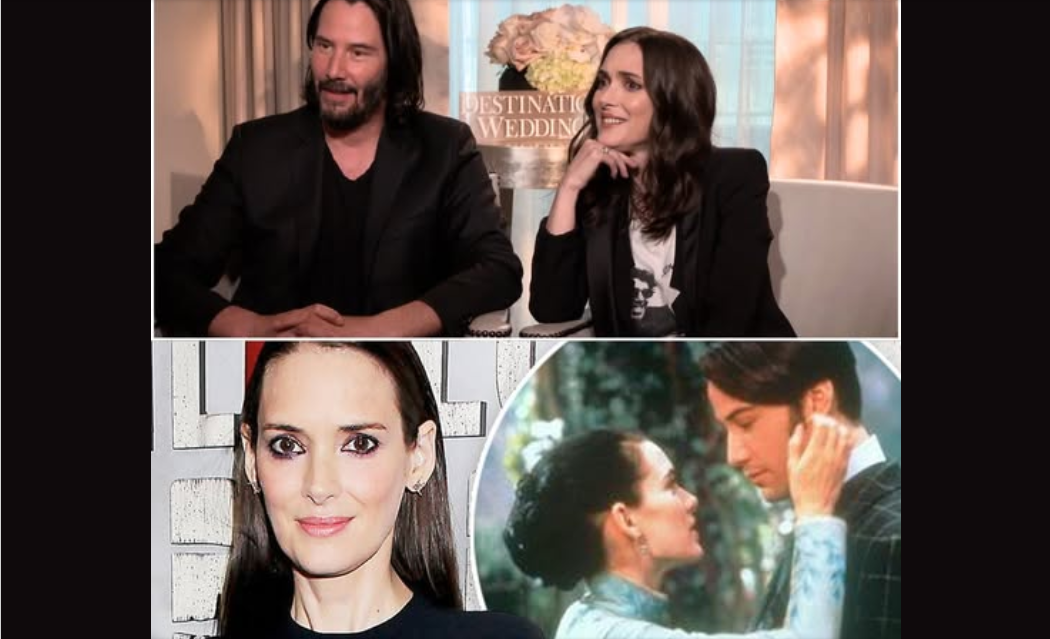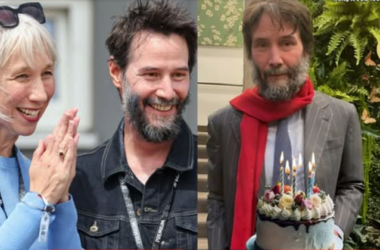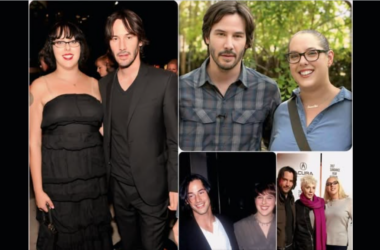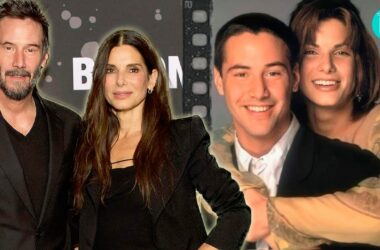
In a heartwarming revelation that underscores the enduring bond between two Hollywood icons, Winona Ryder has opened up about a pivotal moment on the set of Francis Ford Coppola’s 1992 gothic horror masterpiece, Bram Stoker’s Dracula. During a recent interview with Variety to promote her latest project, the 53-year-old actress recounted how her co-star, Keanu Reeves, then 27, steadfastly refused to verbally berate her as directed by Coppola to elicit an emotional response for a key scene. “Keanu wouldn’t do it,” Ryder said, her voice filled with affection. “He was too kind, too gentle. Even when Francis was pushing for it to make me cry, Keanu just couldn’t bring himself to yell at me.” This anecdote, resurfacing amid renewed interest in the film following its 4K remaster release earlier this year, highlights Reeves’ reputation as one of Hollywood’s genuine nice guys—a trait that has only grown more legendary over the decades.
The story, while not new to die-hard fans, gains fresh resonance in today’s climate of heightened awareness around on-set treatment and mental health in the entertainment industry. Ryder’s recounting paints a vivid picture of a young Reeves, fresh off his breakout in Bill & Ted’s Excellent Adventure, prioritizing empathy over directorial demands. As the actress elaborated, “Francis wanted us to get into the intensity of the scene—Gary Oldman and Anthony Hopkins were even brought in to help—but Keanu pulled me aside and said, ‘I can’t do this to you.’ It was sweet, protective, and so Keanu.” This act of kindness not only preserved their friendship but also contributed to the film’s raw emotional authenticity, as alternative methods were used to achieve the desired performance. In an era where stories of toxic sets abound, Ryder’s tale serves as a beacon of positivity, reminding us of the human element behind cinematic magic.
To fully appreciate this moment, one must delve into the careers of Ryder and Reeves, the turbulent production of Dracula, and the lasting impact of Reeves’ refusal. From Ryder’s rise as a ’90s ingenue to Reeves’ evolution into a beloved action star, their paths intersected in this film, forging a bond that endures. Let’s explore the details, the context, and why this story continues to captivate audiences over three decades later.
Winona Ryder: From Child Star to Timeless Icon
Winona Ryder, born Winona Laura Horowitz on October 29, 1971, in Olmsted County, Minnesota, emerged as one of the defining actresses of her generation, blending vulnerability with fierce intelligence. Named after the town of Winona, she grew up in a bohemian household—her parents, Michael and Cynthia Horowitz, were writers and counterculture figures, with family friends including Timothy Leary and Allen Ginsberg. Relocating to Petaluma, California, at age 10, Ryder faced bullying for her unconventional style, finding solace in acting classes.
Her breakthrough came at 15 with Lucas (1986), followed by cult classics like Beetlejuice (1988) and Heathers (1988), where she played the sardonic Veronica Sawyer, cementing her as the voice of Gen X angst. By the early ’90s, Ryder was a bona fide star, earning Oscar nominations for The Age of Innocence (1993) and Little Women (1994). Her role as Mina Murray/Elisabeta in Dracula was a pivotal turn, showcasing her romantic depth opposite Gary Oldman’s Count Dracula.
Ryder’s career has had its ups and downs, including a highly publicized 2001 shoplifting arrest that led to a hiatus. She rebounded with roles in Black Swan (2010) and Stranger Things (2016–present), where her portrayal of Joyce Byers earned Emmy nods. Off-screen, Ryder’s relationships—with Johnny Depp, Matt Damon, and others—have been tabloid fodder, but she maintains privacy, focusing on advocacy for mental health and women’s rights. At 53, she’s a resilient force, with upcoming projects like Beetlejuice Beetlejuice (2024) proving her enduring appeal.
Keanu Reeves: The Reluctant Superstar and Eternal Nice Guy
Keanu Charles Reeves, born September 2, 1964, in Beirut, Lebanon, to an English mother, Patricia Taylor, and Hawaiian-Chinese father, Samuel Nowlin Reeves Jr., has become synonymous with humility in Hollywood. Raised in Toronto after his parents’ divorce, Keanu navigated a turbulent childhood, dropping out of high school to pursue acting. Early roles in River’s Edge (1986) and Bill & Ted’s Excellent Adventure (1989) showcased his laid-back charm, but Point Break (1991) and Speed (1994) established him as an action hero.
Reeves’ Dracula role as Jonathan Harker was a departure, requiring a British accent and romantic intensity. Despite mixed reviews on his performance, the film grossed $215 million, boosting his profile. The ’90s saw him in My Own Private Idaho (1991) and The Matrix (1999), the latter revolutionizing sci-fi and making him a global icon. Personal tragedies—his father’s abandonment, sister Kim’s leukemia battle, the stillbirth of his daughter with Jennifer Syme in 1999, and Syme’s death in 2001—shaped his stoic demeanor.
Reeves’ “nice guy” reputation stems from acts like giving up salary for co-stars in The Matrix sequels and anonymously donating to children’s hospitals. His refusal to abuse Ryder fits this pattern—stories abound of him comforting extras or yielding seats on subways. Recent successes include the John Wick franchise (2014–present) and Cyberpunk 2077 (2020), with a net worth over $380 million. At 60, Reeves remains private, recently marrying Gina Torres in a quiet ceremony, focusing on philanthropy through his cancer foundation.
The Production of Bram Stoker’s Dracula: Intensity on Set
Francis Ford Coppola’s 1992 adaptation of Bram Stoker’s 1897 novel was an ambitious project, aiming to restore the story’s erotic and horror elements. With a $40 million budget, the film starred Gary Oldman as Dracula, Ryder as Mina, Reeves as Harker, and Anthony Hopkins as Van Helsing. Coppola, fresh off The Godfather Part III (1990), sought authenticity, using practical effects and period costumes for a sumptuous visual style.
The set was notoriously intense, with Coppola employing method acting techniques to elicit raw performances. For a scene where Mina is confronted by her suitors after being bitten by Dracula, Coppola wanted Ryder to cry authentically. He instructed Reeves, Oldman, and Hopkins to verbally berate her—calling her names like “whore” to break her down. Oldman and Hopkins complied, but Reeves refused. “Keanu was like, ‘No, I can’t do that to Winona,’” Ryder recalled. “He was too sweet.” Coppola eventually stepped in, yelling at Ryder himself, but even that didn’t work as intended. Ryder laughed it off later, saying, “It was supposed to make me cry, but it just made me giggle.”
This moment, detailed in Ryder’s Variety interview, highlights the era’s demanding directing styles, pre-#MeToo awareness. Coppola defended his methods in commentaries, saying, “I wanted real emotion.” The film, released November 13, 1992, grossed $215 million and won three Oscars for costumes, makeup, and sound, praised for its visuals but criticized for pacing and accents (including Reeves’ British one).
The Impact and Legacy of Reeves’ Refusal
Reeves’ stand resonated beyond the set, strengthening his friendship with Ryder. “We’ve been friends ever since,” she said. “That kindness is who Keanu is.” It contributed to his “sad Keanu” meme and saint-like status, with stories of him donating motorcycles to stunt teams or comforting grieving fans.
In today’s context, the anecdote sparks discussions on consent and boundaries. Ryder noted, “It was a different time, but Keanu’s refusal was ahead of its curve.” It contrasts with abusive set stories, like those from The Shining (1980), where Stanley Kubrick pushed Shelley Duvall to exhaustion.
Reeves’ image as Hollywood’s gentleman endures, influencing his roles—from the honorable John Wick to the philosophical Neo. Fans on social media celebrate: “Keanu refusing to hurt Winona? That’s why he’s the best,” tweeted @ReevesFanClub. Ryder’s revelation has renewed interest in Dracula, with streams spiking on platforms like Netflix.
Broader Hollywood Context: Kindness in a Cutthroat Industry
Reeves’ act fits a pattern of on-set compassion, like Tom Hanks’ supportiveness or Emma Watson’s advocacy. It counters toxic masculinity narratives, aligning with post-#MeToo reforms. Ryder, a survivor of industry pressures, uses her platform to highlight positive stories, saying, “We need more Keanus.”
As both stars thrive—Ryder in Stranger Things Season 5, Reeves in John Wick: Chapter 5—their Dracula bond reminds us of humanity behind the glamour.
In conclusion, Winona Ryder’s story of Keanu Reeves’ refusal is more than anecdote—it’s a testament to empathy’s power. In Hollywood’s high-pressure world, such acts shine brightest, inspiring generations.




